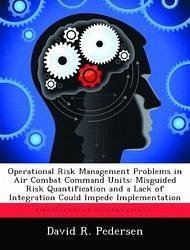In 1987, the US Army implemented Operational Risk Management (ORM) techniques in an attempt to reduce mishaps. By the early 1990s, the Army reduced serious mishaps by more than 80 percent. In 1996, Air Combat Command (ACC) outlined its ORM implementation strategy in an attempt to reduce all types of mishaps while improving operational effectiveness. While this plan allows for a tailored approach to a wing's unique culture, the implementation has created some problems within ACC units. The commander of ACC emphasized that this implementation is a top down change in philosophy and not necessarily a new safety program. This is important because a cultural change is required to embed ORM seamlessly into everyday missions. The main problem found during this study was that units are attempting to quantify risks without the necessary information or knowledge of the limitations with risk quantification. In addition to this misguided quantification, units are not properly integrating ORM into the mission; thus creating extra work that has little benefit. ACC is taking steps to improve the ORM process at the unit level by providing better information databases and automated risk assessments during mission scheduling. However, these programs are not in place and because of the emphasis ORM has from the top leadership, ACC units are basically trying to do too much too soon. This could seriously impede the ORM implementation plan due to frustration from a lack of progress with regards to minimizing risks and improving mission benefits. This study recommends several possible solutions to these problems, but emphasizes that more study is needed to find the best possible solutions to the ORM problems in ACC units.
Hinweis: Dieser Artikel kann nur an eine deutsche Lieferadresse ausgeliefert werden.
Hinweis: Dieser Artikel kann nur an eine deutsche Lieferadresse ausgeliefert werden.








